
Looking for collaboration on your next project? Don't hesitate to contact us by email:
novosnegocios@servmarambiental.com

Looking for collaboration on your next project? Don't hesitate to contact us by email:
novosnegocios@servmarambiental.com
Servmar is available to answer your questions.
Would you like to join our team?
jobs@servmarambiental.com.br
Servmar is a benchmark in the Brazilian market for environmental remediation solutions, with a proven track record of more than 800 projects. Our team of highly qualified specialists employs a wide range of advanced techniques, both in situ and ex situ, to contain, treat and remove contaminants from the environment. Our commitment is to transform contaminated areas into safe and productive spaces, restoring environmental quality and protecting public health and ecosystems.
Dealing with different types and combinations of pollutants
Adapting techniques for different types of soil and hydrogeological conditions
Balancing the effectiveness of remediation with budgetary and time constraints
Keep up to date with changes in environmental legislation
Minimize disturbances during the remediation process
Environmental remediation is a crucial process in the management of contaminated sites, where carefully designed intervention plans are transformed into concrete actions to restore the quality of the environment.
At Servmar, we understand that this phase is essential to guarantee the safety of ecosystems and public health. Our approach integrates cutting-edge techniques, practical experience and continuous innovation to offer effective and sustainable solutions. This process involves several interconnected activities, including: detailed assessment of the contamination, selection of the most appropriate remediation techniques, implementation of containment and treatment measures, and ongoing monitoring of the effectiveness of the interventions.

Pilot testing is crucial for defining remediation techniques, as it allows small-scale testing of the effectiveness of the proposed methodologies in the specific contamination environment. It helps to identify the response of contaminants to the selected techniques, assess possible limitations and adjust parameters before full implementation.
In addition, the pilot test provides valuable data for predicting the technical and economic feasibility of remediation, minimizing risks and ensuring greater precision in choosing the most appropriate approach for the project.
For example, the pilot pumping test makes it possible to determine the extraction capacity of contaminated water, the influence of pumping on the contamination plume, and the recovery rate of the aquifer. It also provides essential information on well performance, hydraulic conductivity and the system's radius of influence. From this data, it is possible to optimize the sizing of the pumping system, predict the need for adjustments and minimize operational risks, ensuring that the method is technically feasible and efficient before its large-scale application.
Another example is the bench test for oxidants, which makes it possible to assess, under controlled conditions, how oxidants will react with specific contaminants present in soil or groundwater, as well as determining the ideal dosage and reaction rate. This type of test provides critical information on the efficiency of the oxidizer in degrading the pollutants, identifies possible by-products, and helps to avoid problems such as excessive consumption of reagents or unwanted reactions. In other words, it reduces uncertainties and guarantees greater safety and efficiency in field application.
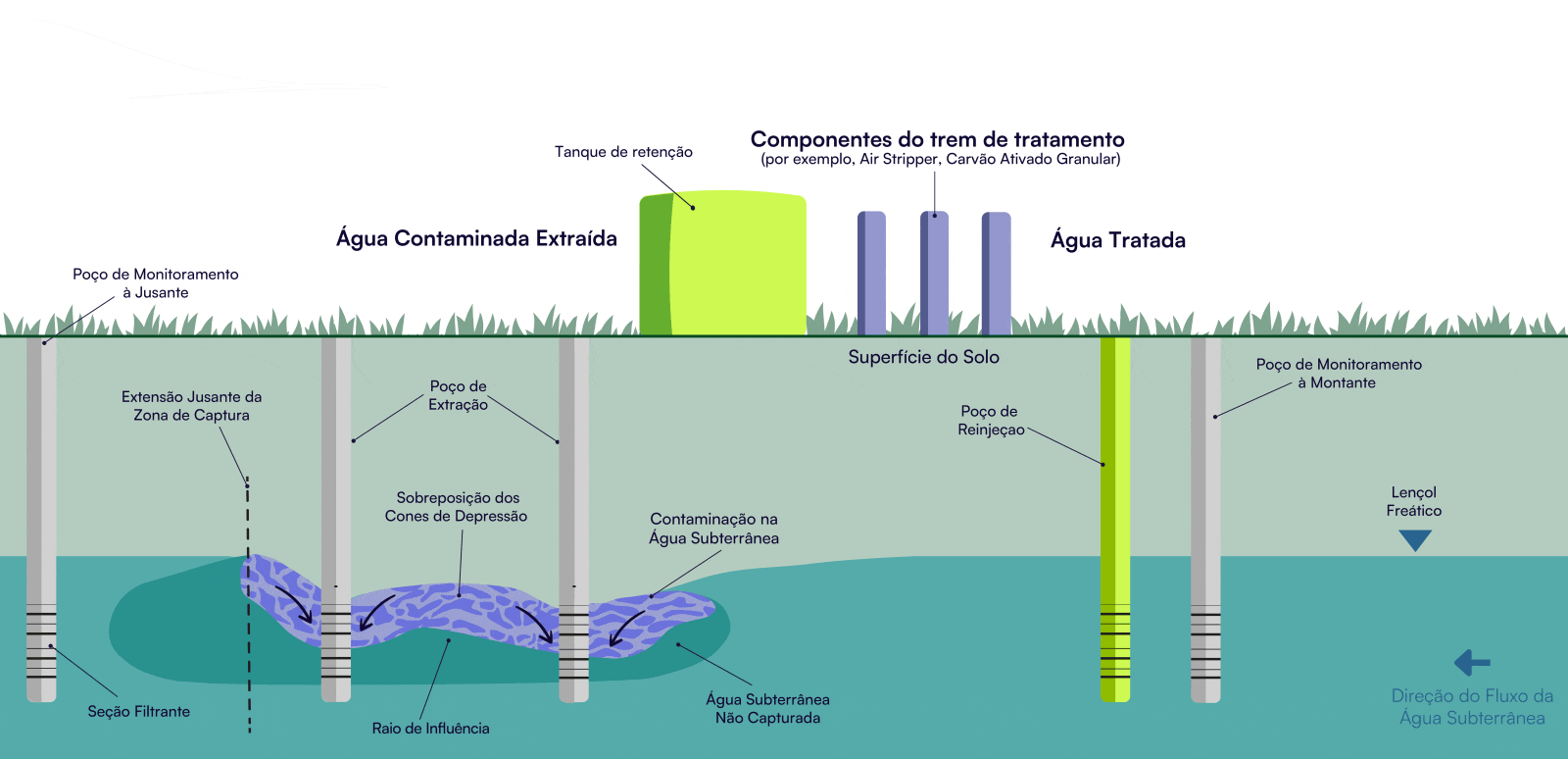
O Pump & Treat is a remediation technique that involves extracting contaminated groundwater by pumping. The pumped water is treated on the surface to separate and remove the contaminants before being rejected into the aquifer or disposed of safely.
It is mainly used to remove contaminants both in the immiscible phase (NAPL) and dissolved in groundwater, ensuring the safe recovery and treatment of impacted areas.
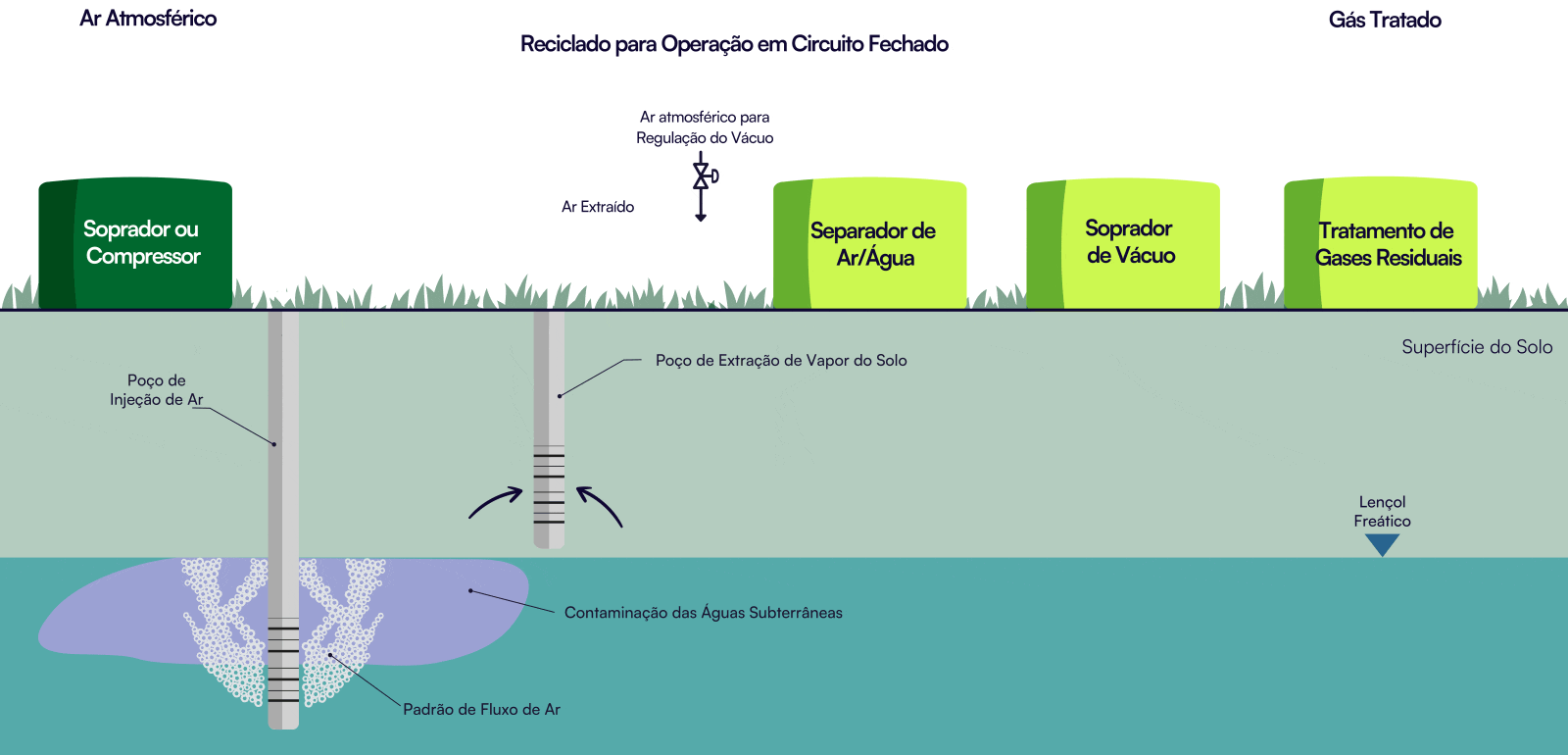
O Air Sparging is a technique that uses the injection of air into the groundwater (saturated zone) in order to promote the mass removal of contaminants through the volatilization of the compounds present, as well as promoting the increased biodegradation of the contaminants dissolved in the groundwater.
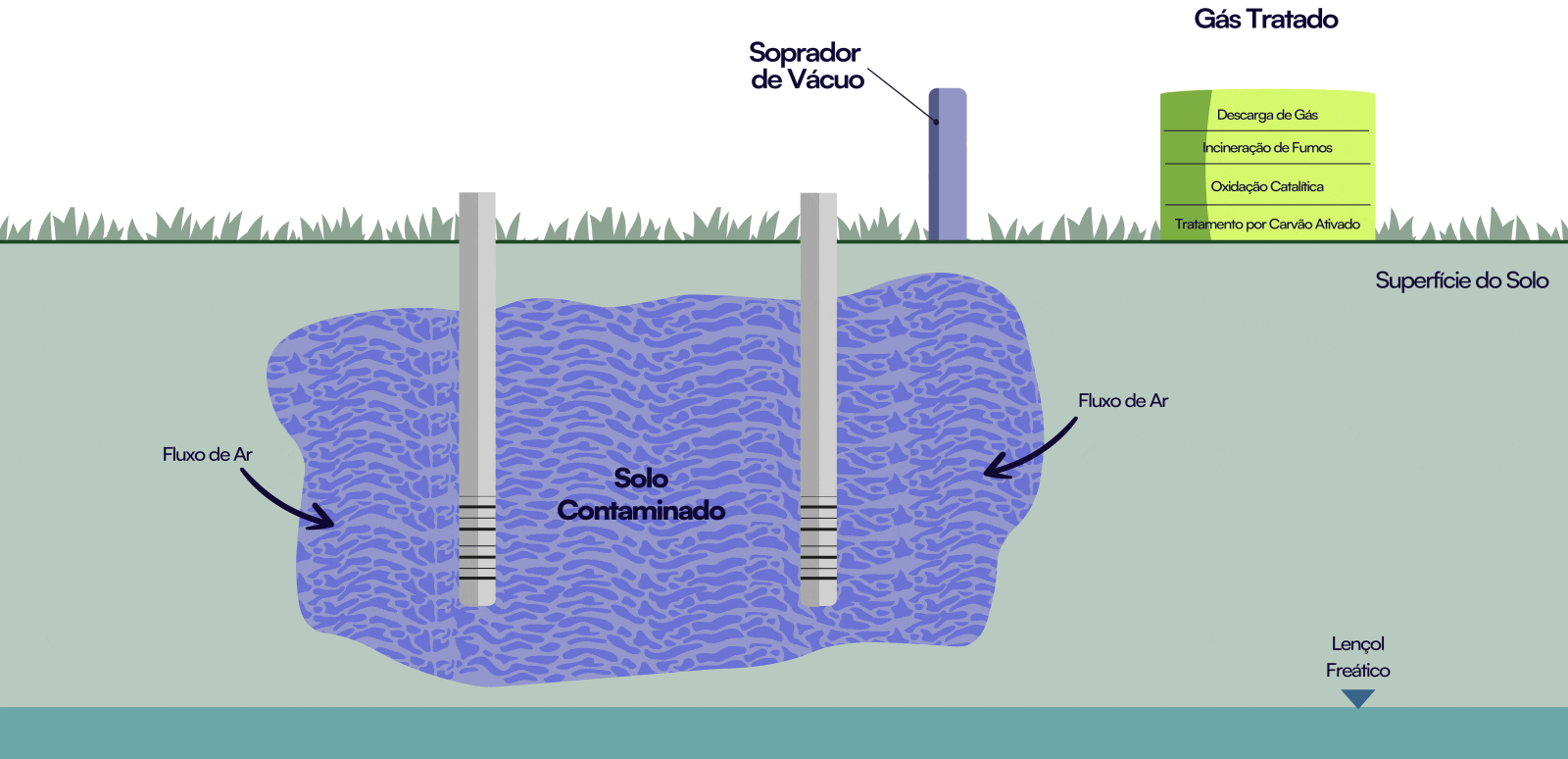
O Soil Vapor Extraction (SVE) is a remediation technique that removes volatile contaminants from unsaturated soil. It uses a vacuum system to extract contaminated vapors through wells or drains, which are then treated for release into the environment. It is mainly effective for volatile organic compounds (VOCs) in permeable soils.
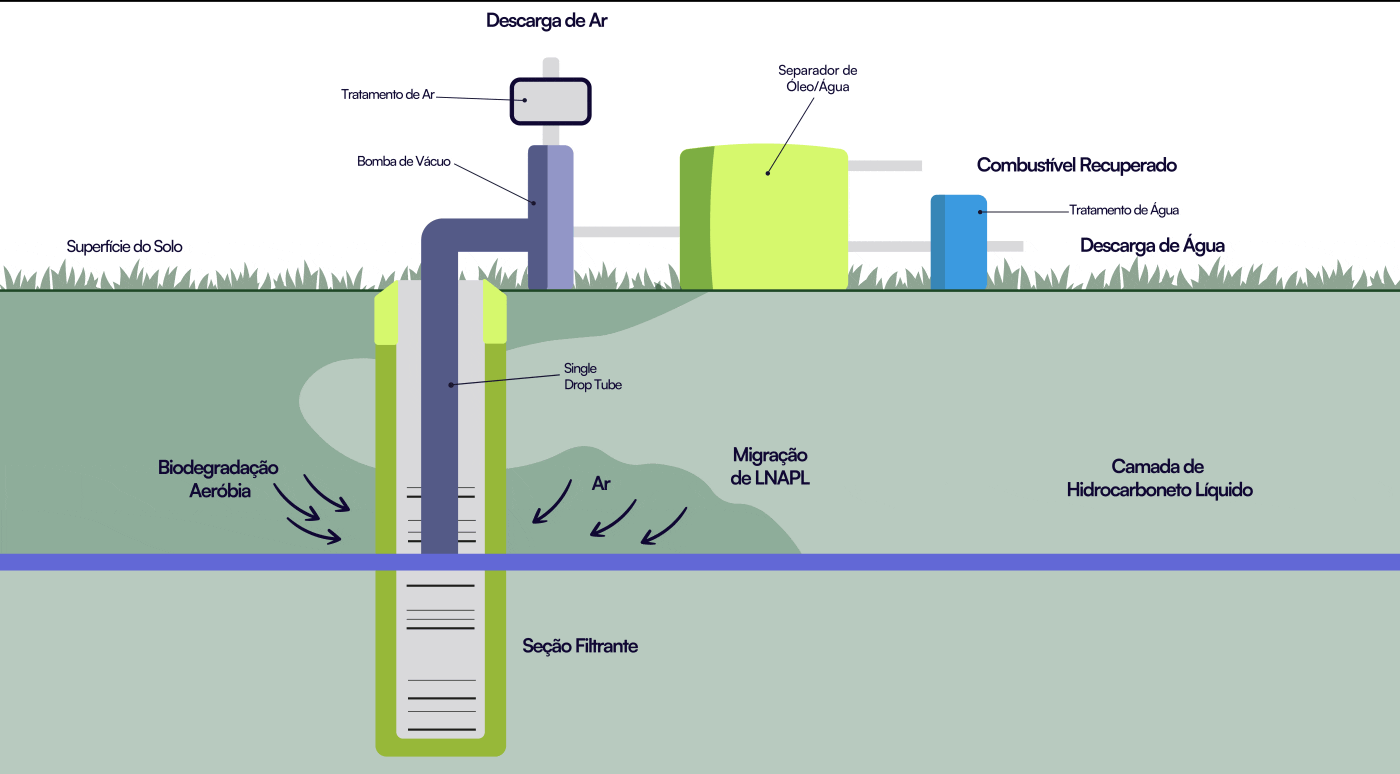
The techniques Multi-Phase Extraction (MEP) or Dual-Phase Extraction (DPE) are remediation techniques that simultaneously remove contaminants present in soil and groundwater in various phases, such as dissolved phase, immiscible liquids (NAPL) and vapors.
The Multi-Phase Extraction (MPE) uses a vacuum system to extract contaminants in the liquid and gas phases through a single pipe (droptube) and a single vacuum pump. The different phases are then separated and treated individually on the surface.
The Dual-Phase Extraction (DPE) extracts the contaminants in the liquid and gas phases through separate pipes using different pumps, a submerged pump for the liquid phase and a vacuum pump for the gas phase.
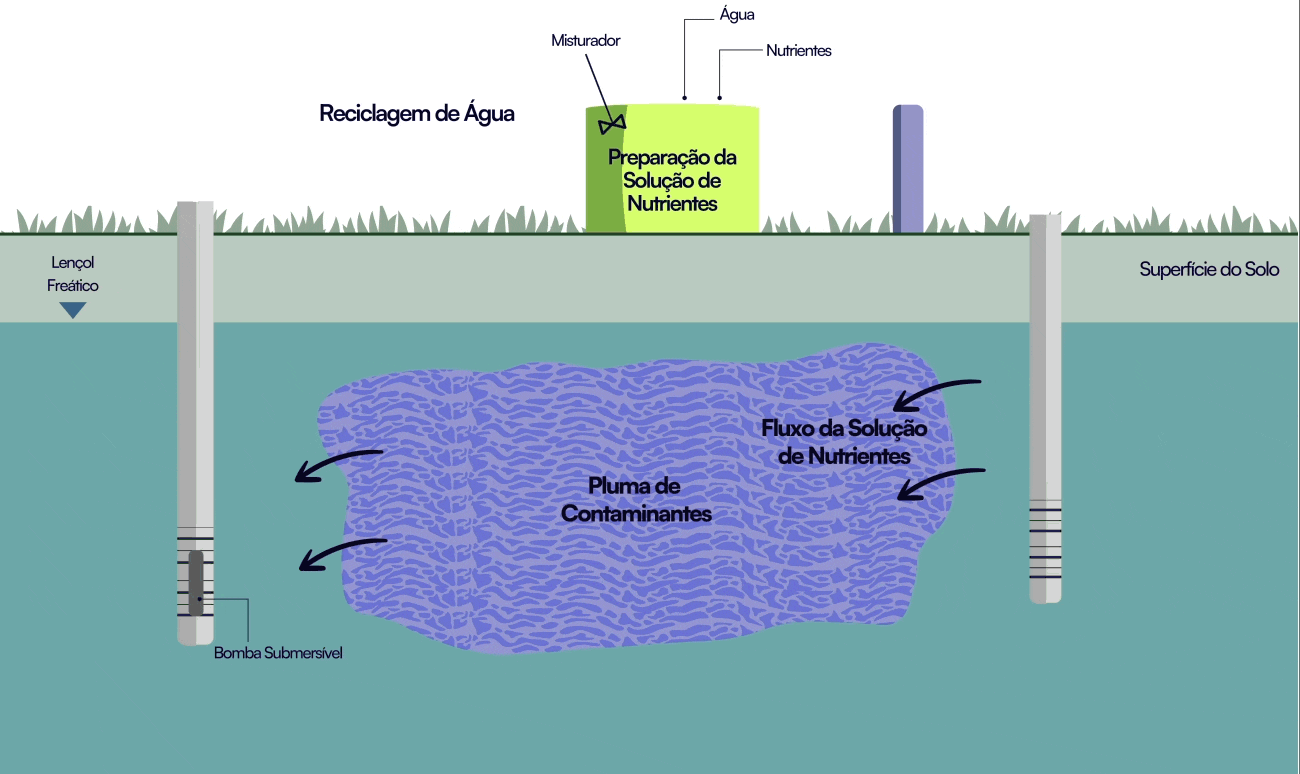
Bioremediation is a remediation technique that uses microorganisms, such as bacteria and fungi, to degrade or transform contaminants into less toxic substances.
These microorganisms metabolize contaminants such as organic compounds and hydrocarbons, promoting their natural decomposition. Bioremediation can be applied in situ or ex situ and is effective for treating contaminated soil and groundwater.
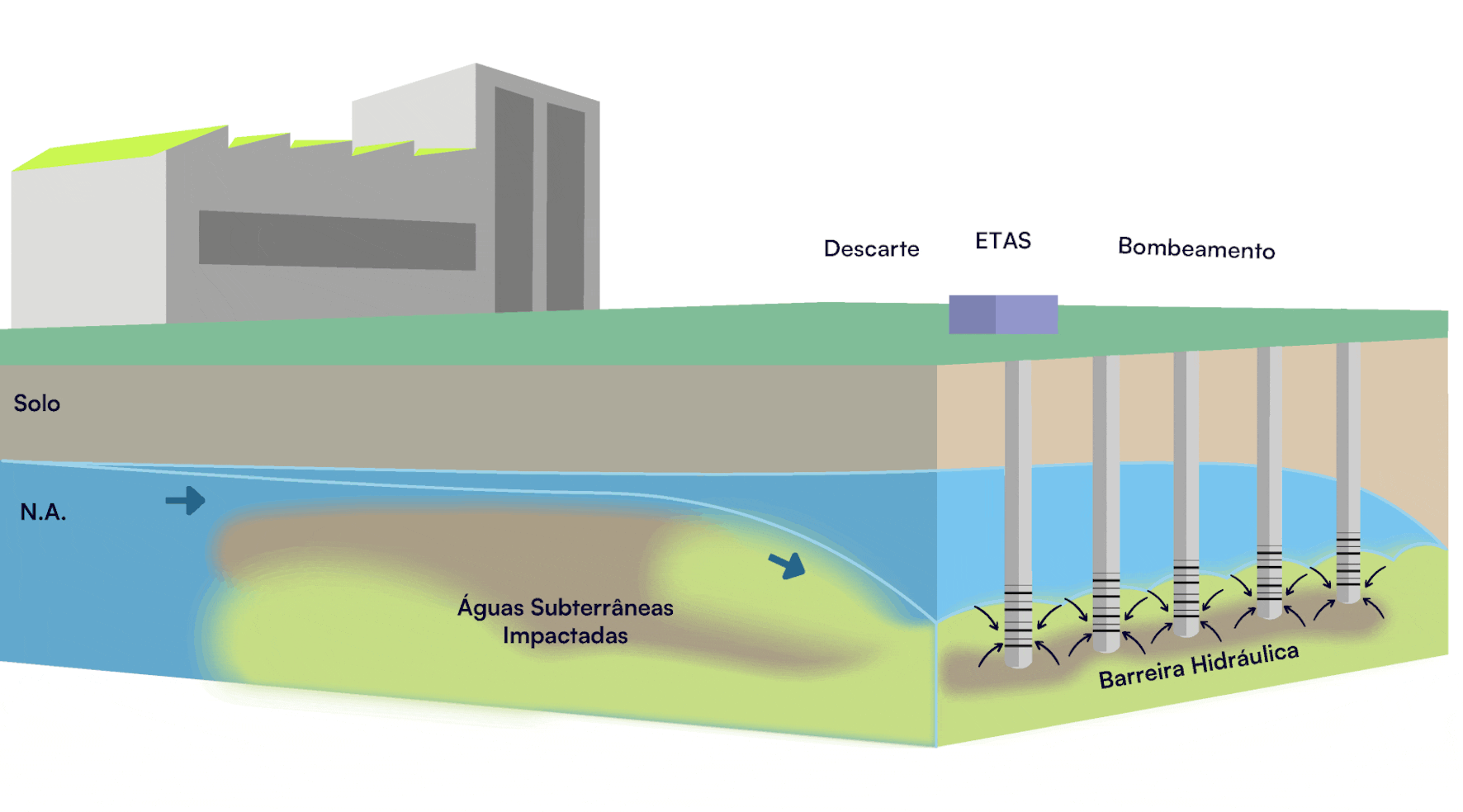
This technique consists of the strategic installation of pumping wells around the contaminated area, with the aim of intercepting the contamination plume and preventing it from advancing beyond the established limits. By extracting the contaminated groundwater, the technique prevents it from migrating to unaffected areas. The captured water is then subjected to appropriate treatments to remove the contaminants before being reinjected underground or disposed of safely.
Although it is primarily a containment technique, it can also be integrated into soil and groundwater remediation and decontamination processes.
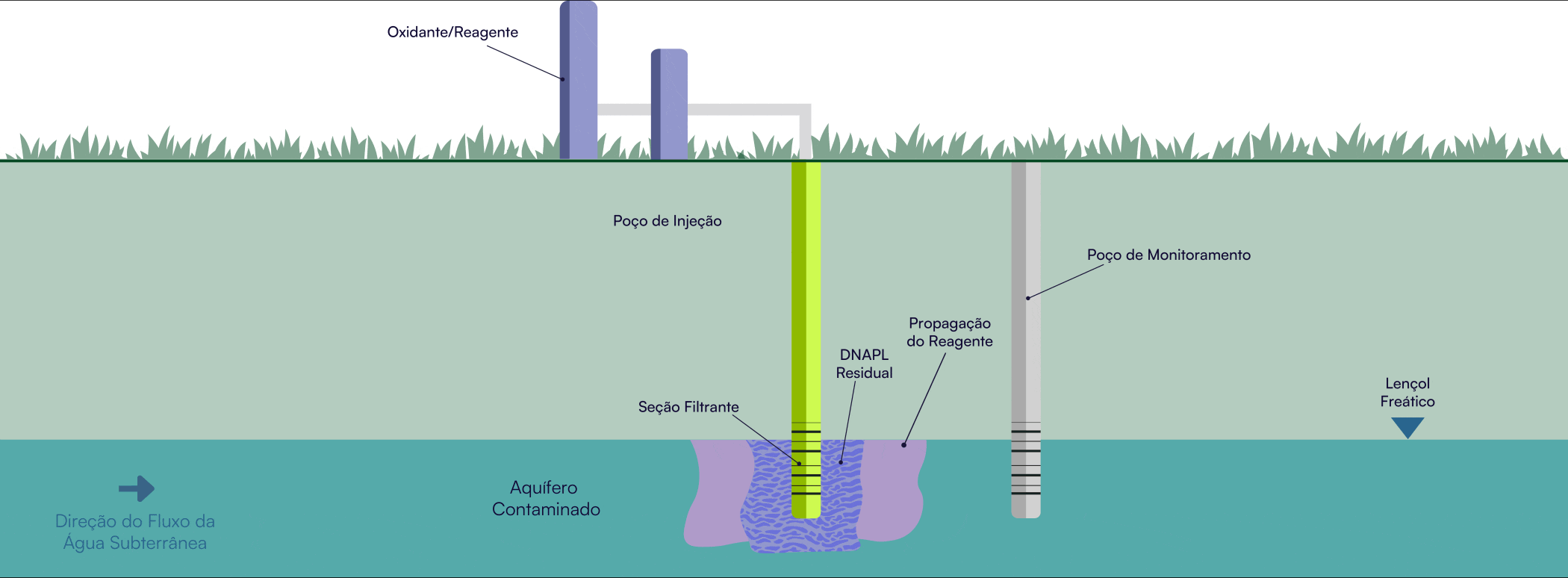
Remediation by chemical oxidation is a technique applied in situ in soil and groundwater (ISCO), in which oxidizing agents promote oxy-reduction reactions, degrading contaminants and transforming them, in most cases, into less aggressive or non-toxic forms for human health and the assets to be protected.
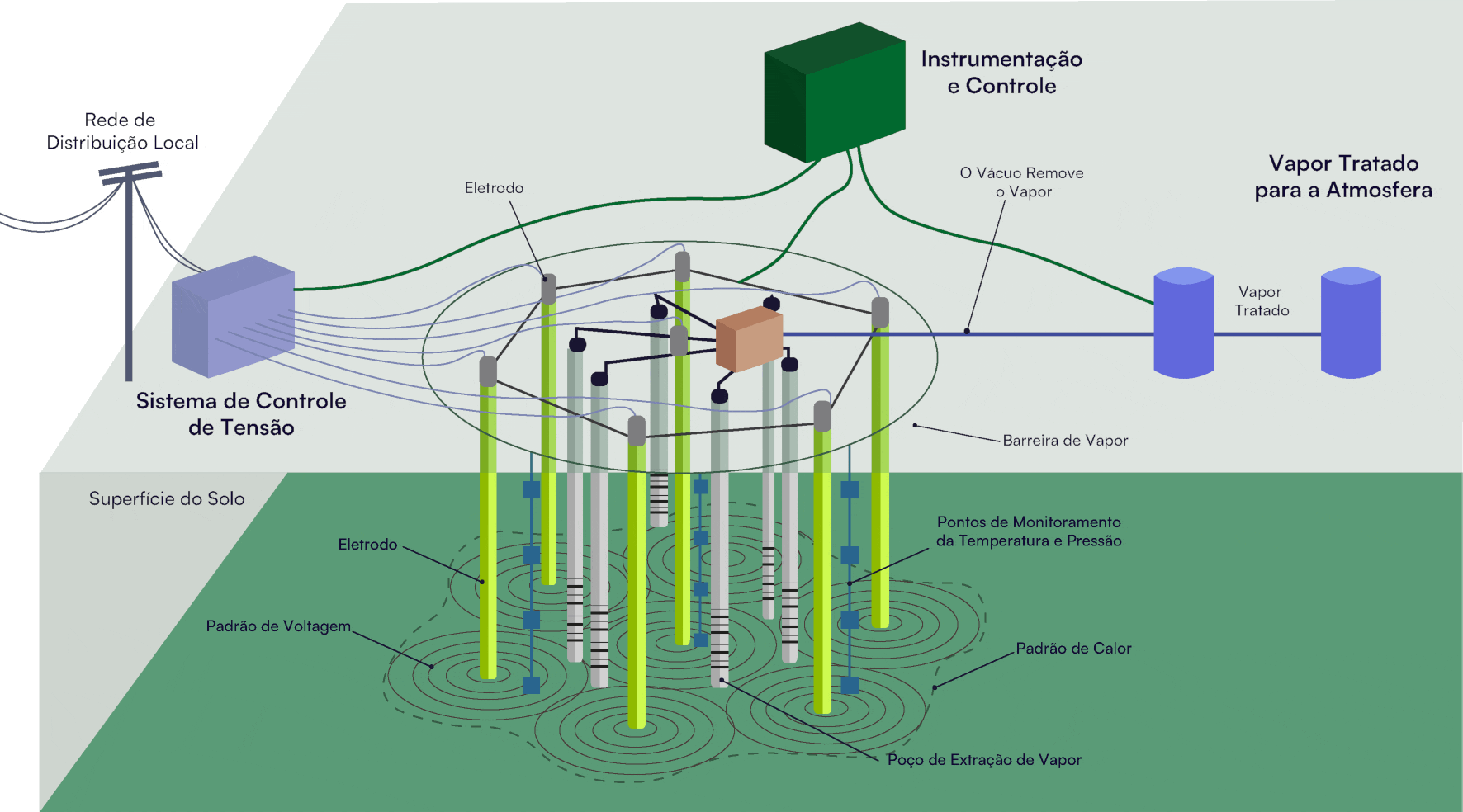
Thermal remediation is a technique that uses heat to volatilize or destroy contaminants in soil or groundwater. By heating the contaminated area, the contaminants are converted into vapors, which are captured and treated on the surface, or are degraded on site. It is effective for removing volatile and semi-volatile organic compounds.
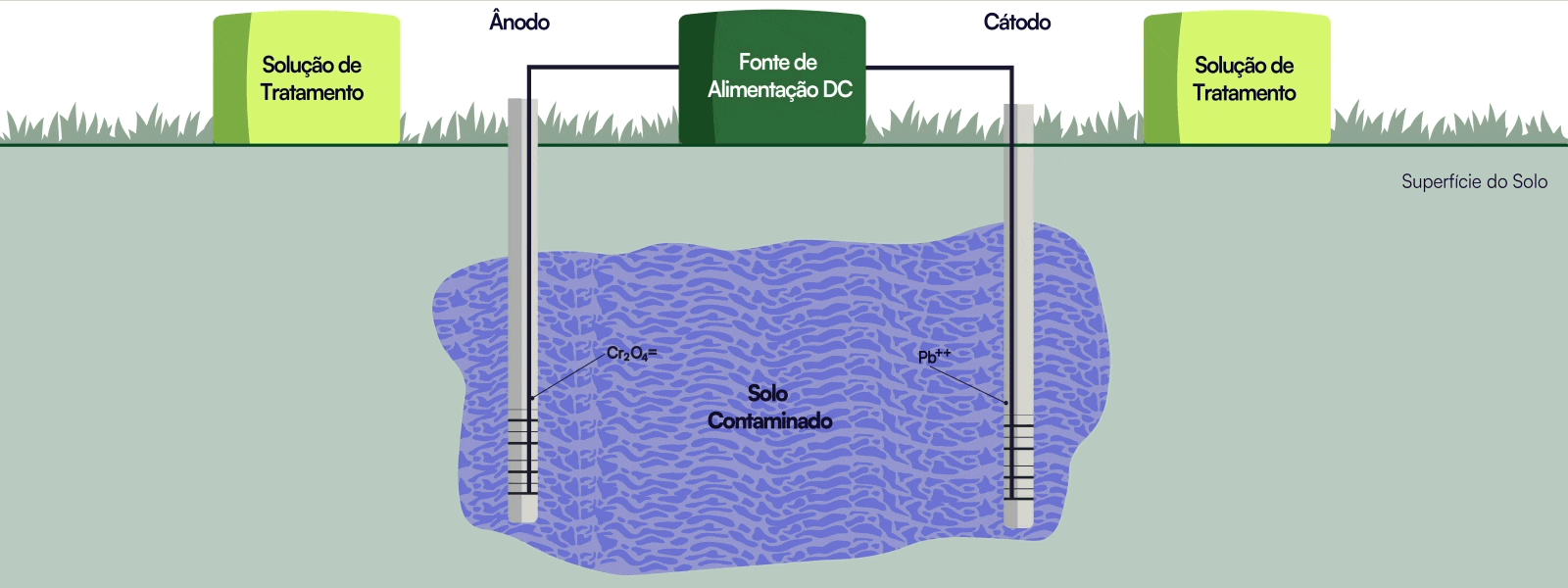
Electrokinesis remediation uses electric currents applied to the soil to move electrically charged contaminants, such as heavy metals and organic compounds, towards electrodes, where they can be extracted or neutralized. It is especially effective in soils with low permeability, such as clays.
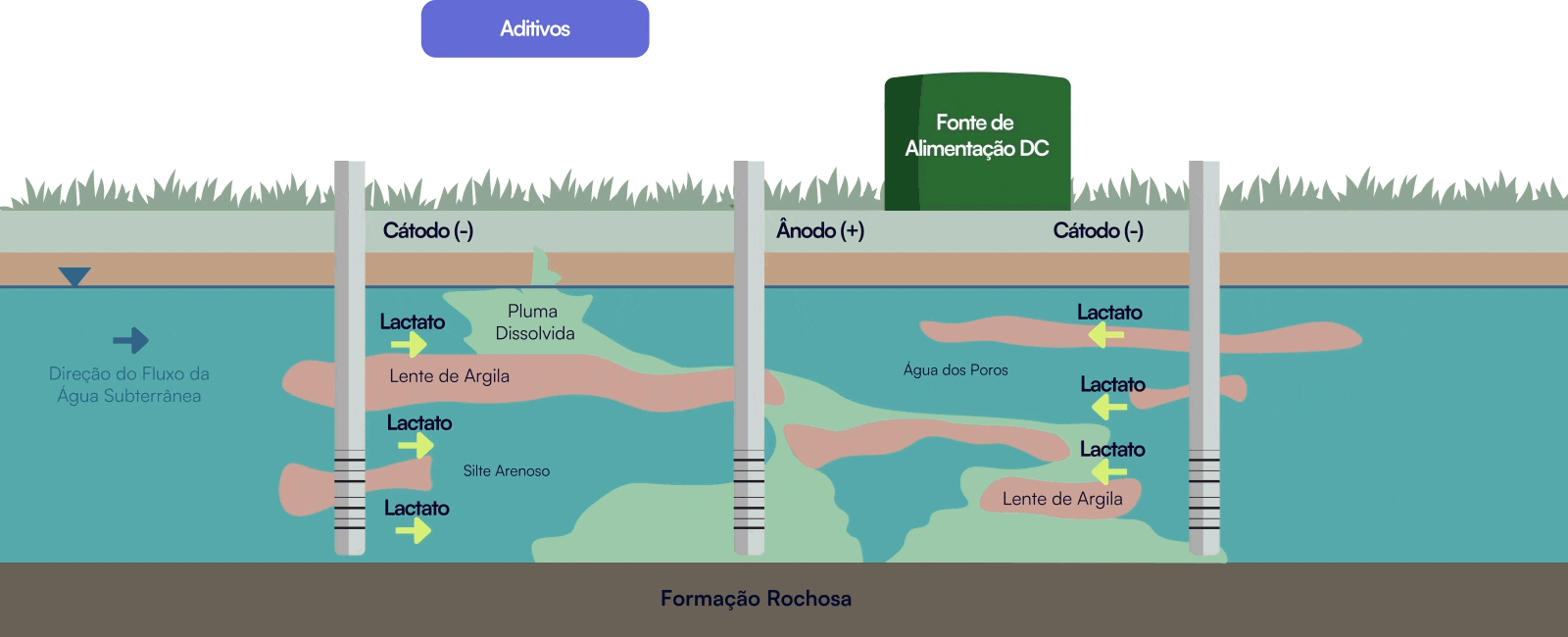
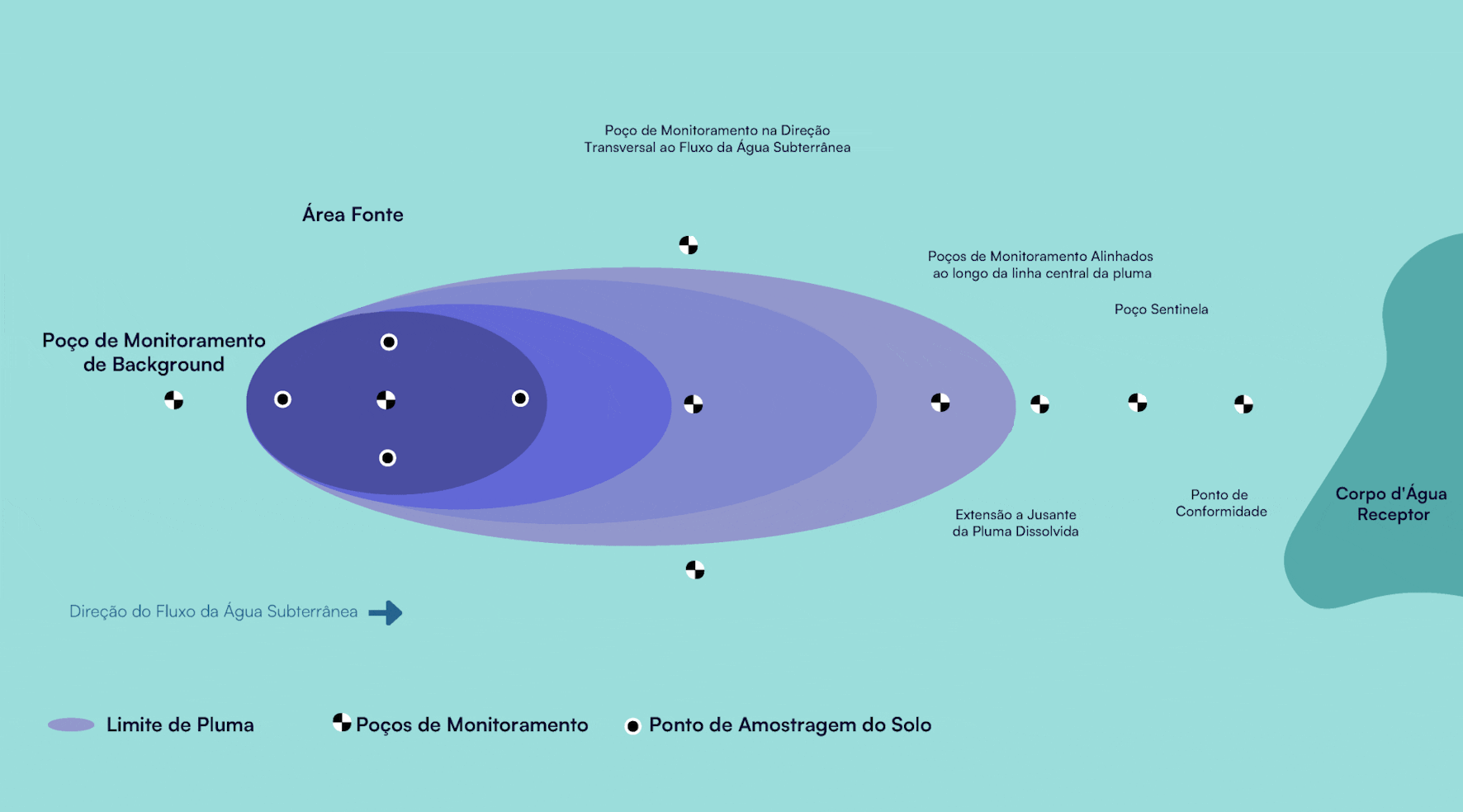
Monitored Natural Attenuation (MNA) is a passive process in which the physical, chemical and biological mechanisms present in the environment reduce the concentration and mobility of contaminants over time.
Natural attenuation involves continuous monitoring of the temporal and spatial evolution of contaminants, as well as geochemical indicators, to ensure the effectiveness and safety of the environmental remediation process.

Thermal remediation is a technique that uses heat to volatilize or destroy contaminants in soil or groundwater. By heating the contaminated area, the contaminants are converted into vapors, which are captured and treated on the surface, or are degraded on site. It is effective for removing volatile and semi-volatile organic compounds.
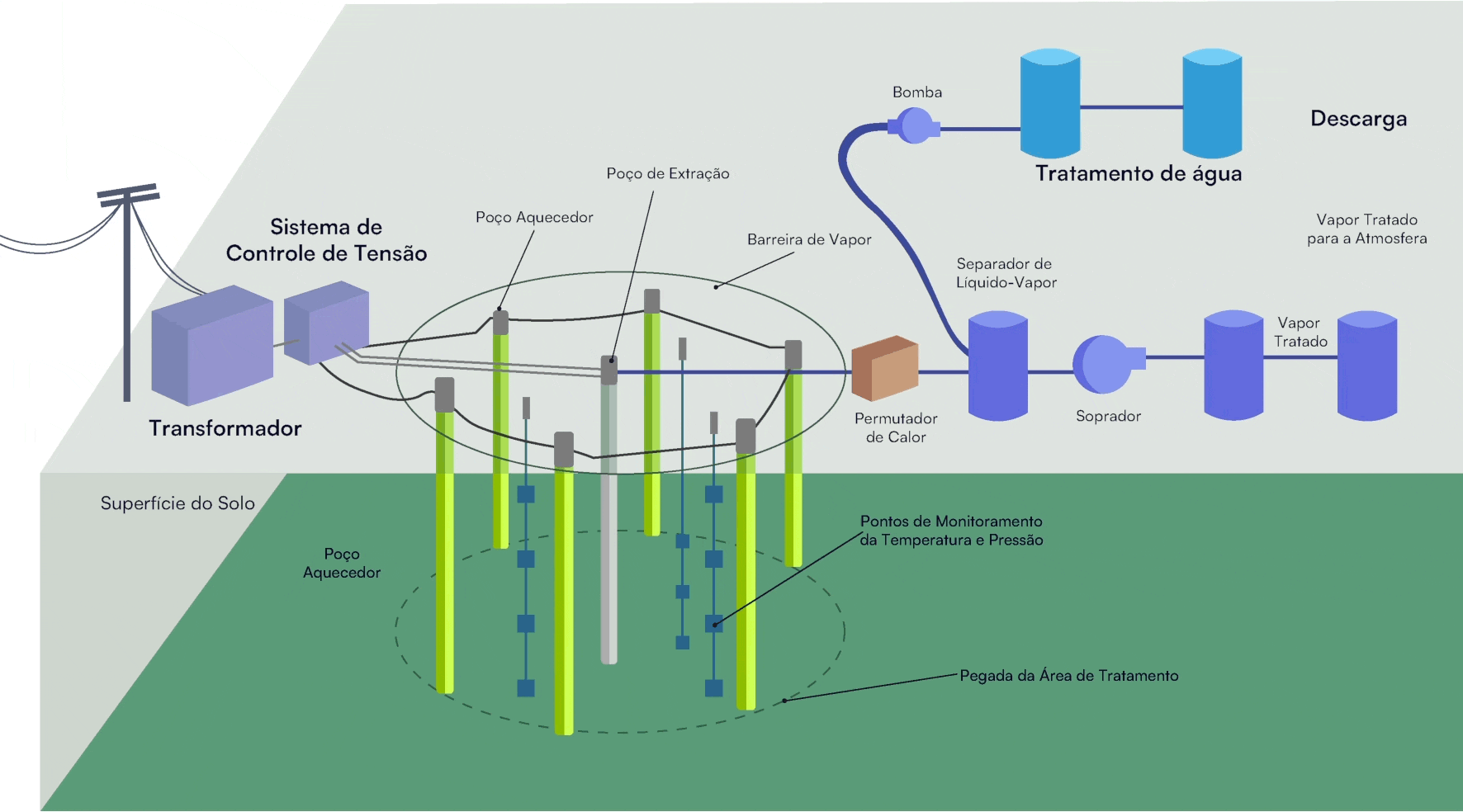
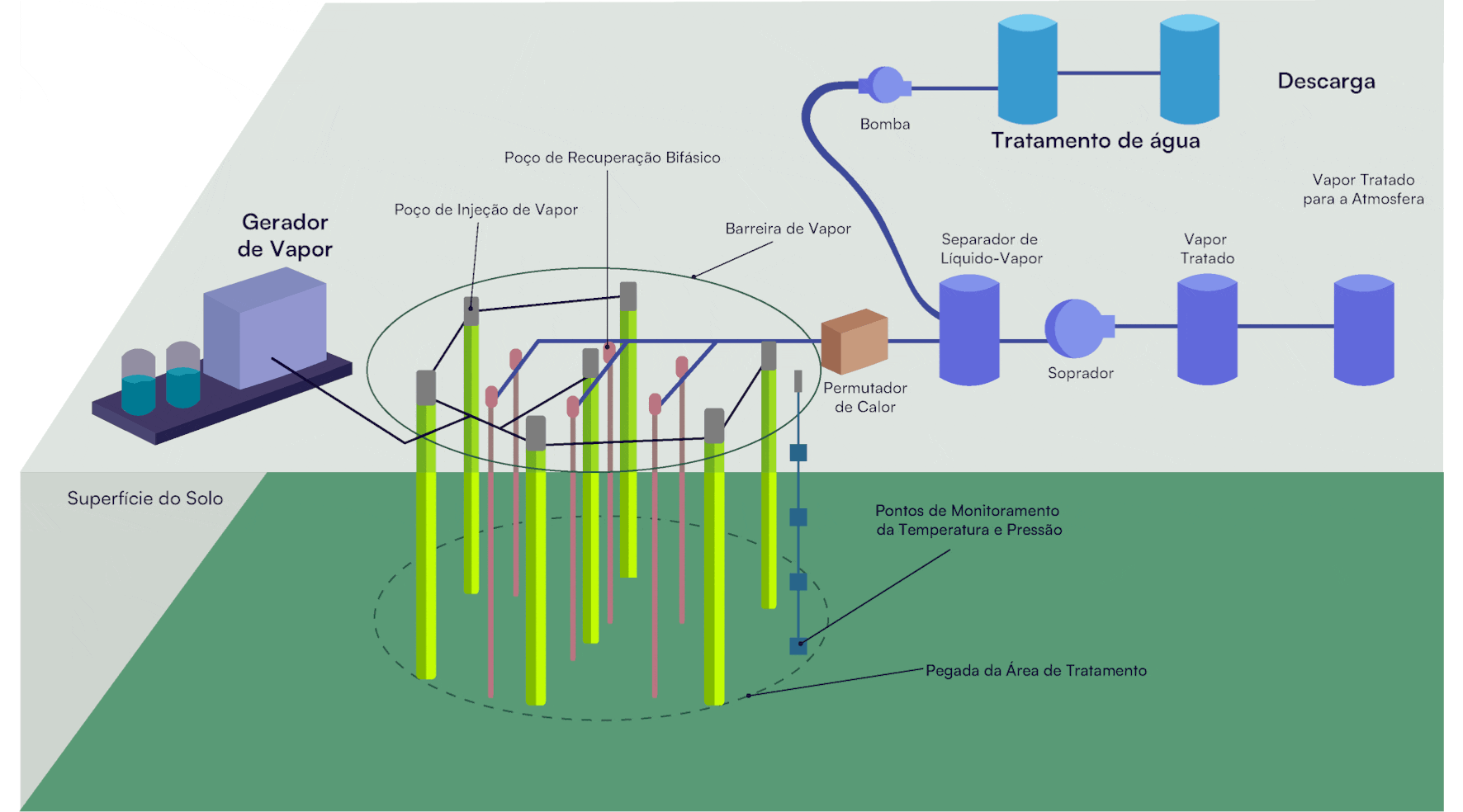
The Management of Contaminated Areas is a multifaceted process that requires a systematic and meticulous approach. Each stage of this process is crucial, building on the information and results of the previous phases, as established at the federal level by CONAMA Resolution No. 420/2009, in the state of São Paulo by CETESB Board Decision No. 38/2017/C and other applicable legislation, thus ensuring a comprehensive understanding and an effective solution to the challenges of contamination.
Servmar offers a comprehensive portfolio of services in Contaminated Area Management, combining technical expertise, advanced technologies and a deep understanding of the Brazilian regulatory context.
Find out more about our solutions:

The removal and disposal of contaminated soil involves excavating the affected soil, followed by its transportation to licensed treatment or disposal sites.
This method removes contaminants from the area of origin, preventing the spread of contamination, and ensures that the soil is treated or disposed of safely, in accordance with environmental regulations. It is a relatively efficient and fast method.
During the process, it is essential to take pit bottom samples to prove the efficiency of the remediation. In addition, it is essential to have specialized technical support during the work, ensuring that the procedure is carried out in accordance with environmental standards and with the necessary safety.
Management and supervision are fundamental in remediation processes, as they ensure that each stage is carried out efficiently, safely and in compliance with environmental regulations.
Qualified technical support allows challenges to be identified early and corrective solutions to be applied, ensuring the effectiveness of the remediation techniques used.
In addition, continuous supervision guarantees the traceability of actions, quality control and the minimization of risks, protecting both human health and the environment.
Brazil, with its vast territory and diversity of industrial activities, faces significant challenges related to environmental contamination. Growing awareness of the impacts of pollution on public health and ecosystems makes environmental remediation a national priority. Servmar recognizes the complexity of this scenario and works actively to offer innovative and effective solutions.
The importance of environmental remediation in Brazil can be seen in various aspects:
Servmar is at the forefront of these efforts, offering a comprehensive portfolio of remediation techniques that meet the specific needs of each project. Our experience allows us to address a wide range of scenarios and types of contamination with confidence and expertise.
At Servmar, our approach to environmental remediation is based on decades of experience and continuous innovation. We combine technical expertise, in-depth knowledge of local conditions and cutting-edge technologies to offer customized and effective solutions for each project.
? ?
At Servmar, we are committed to providing clear and accurate information to help our customers better understand our services and the importance of environmental sustainability.
This FAQ section has been created to answer the most common questions, providing quick access to answers that can help you make informed decisions. We value transparency and open communication, and we are always happy to answer any other questions you may have.
Environmental remediation is the process of containing, treating or removing contaminants from the environment, such as soil, groundwater, sediment or surface water. It is a crucial stage in the management of contaminated areas, aimed at restoring the environment to a state that is safe for human health and the ecosystem. This process can involve various techniques, depending on the type and extent of contamination.
In situ techniques are applied directly to the contaminated site, without the need for excavation or removal of the contaminated material. Examples include bioremediation, chemical oxidation and air sparging.
Ex situ techniques involve the physical removal of contaminated material for treatment elsewhere. This includes excavating contaminated soil or pumping groundwater for treatment on the surface.
The choice of remediation technique depends on several factors, such as:
At Servmar, we carry out a comprehensive assessment of all these factors to recommend the most appropriate technique or combination of techniques for each specific project.
Remediation time can vary significantly depending on various factors, such as:
Some projects can be completed in months, while others can take years. At Servmar, we strive to optimize the process, using advanced techniques and continuous monitoring to achieve the remediation objectives efficiently.
Mathematical modeling is a powerful tool in environmental remediation:
At Servmar, we use advanced mathematical models to improve our understanding of contamination and remediation processes, allowing us to develop more effective and efficient strategies.
Monitoring is a crucial part of the remediation process and usually includes:
Servmar implements comprehensive, long-term monitoring programs to ensure the ongoing effectiveness of the remediation solutions implemented.
Adding {{itemName}} to cart
Added {{itemName}} to cart